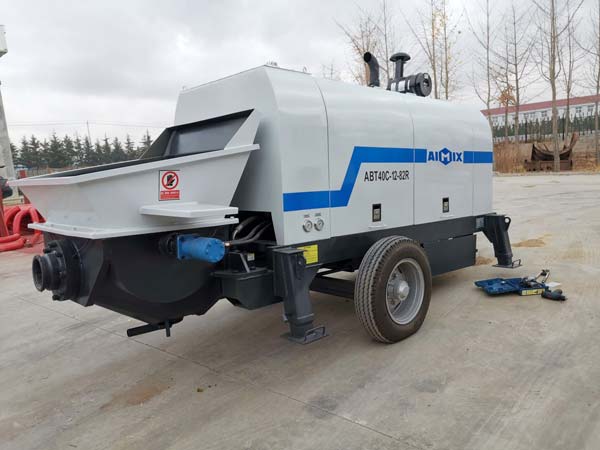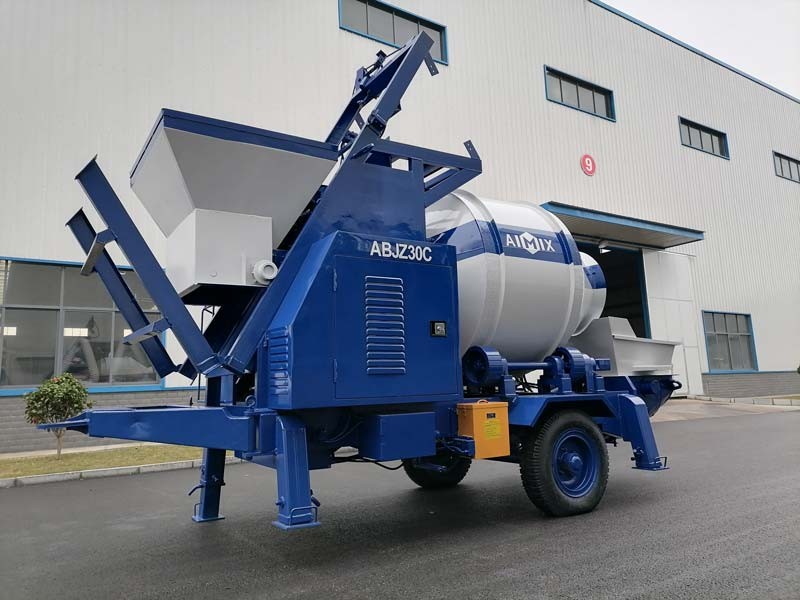In the world of construction, selecting the right equipment is crucial for successful project execution. When it comes to concrete pumping, it’s essential to discern the differences between various types of pumps to make informed decisions. In this article, we will explore the distinctions between a line pump and a mixing concrete pump. By understanding their unique features and functionalities, you’ll be equipped to choose the most suitable pump for your construction projects.
Understanding Line Pumps
A line pump, also known as a stationary pump, is a concrete pumping machine designed to transport liquid concrete through a system of pipes and hoses. It utilizes a powerful piston system or a hydraulic pump to push the concrete along the pipeline, allowing for precise and controlled placement of the material. Line pumps for sale are commonly used for projects that require horizontal concrete pouring, such as foundations, slabs, and driveways.

Line pumps typically feature a large hopper where the concrete is loaded for pumping. They are equipped with an array of steel or rubber hoses that allow for flexibility and reach in delivering concrete to the desired location. Line pumps are known for their ability to handle a wide range of concrete mixes, including lightweight and low-slump materials. They provide efficient and consistent flow rates, making them ideal for projects that require a steady and continuous concrete placement.
Understanding Mixing Concrete Pumps
A mixing concrete pump, also known as a combination pump, integrates the functions of a concrete mixer and a concrete pump into a single machine. This hybrid equipment not only transports liquid concrete but also has an onboard mixer that blends the aggregate, cement, and water to produce a homogeneous mixture. Mixing concrete pumps are versatile and can be used for various construction applications, including high-rise buildings, infrastructure projects, and remote job sites.
Mixing concrete pumps are equipped with a mixing drum or hopper where the raw materials are combined and mixed thoroughly. The machine uses a hydraulic system to pump the mixed concrete through the pipeline to the desired location. These pumps offer the advantage of producing fresh concrete on-site, eliminating the need for separate batching plants. Mixing concrete pumps are highly efficient and provide a consistent supply of quality concrete, making them suitable for projects that require large volumes of concrete and continuous mixing.

Discerning the Differences
Differentiation based on primary function and operation
The primary distinction between a line pump and a mixing concrete pump lies in their functions and operations. A line pump is primarily designed for concrete transportation and placement, focusing on the efficient and precise delivery of concrete to the desired location. On the other hand, a mixing concrete pump combines concrete mixing and pumping functionalities, allowing for on-site production and immediate placement of fresh concrete. Get info here: https://aimixgroup.ph/concrete-pump
Comparison of key features and applications
When comparing line pumps and mixing concrete pumps, it’s essential to consider their key features and applications. Line pumps excel in projects that require horizontal concrete placement, where a continuous flow of concrete is needed. They are ideal for smaller-scale projects and situations where a steady and controlled flow of concrete is essential. Mixing concrete pumps, with their integrated mixing capabilities, are well-suited for larger projects that require high volumes of concrete and immediate placement. They offer the advantage of on-site mixing, ensuring a fresh and consistent concrete supply.
Choosing the Right Pump for Your Project
Selecting the right pump for your construction project requires a thorough evaluation of your specific requirements and specifications. Consider factors such as the volume and type of concrete needed, the distance and height of concrete placement, and the desired speed of operation. Assessing these factors will help you determine whether a line pump or a mixing concrete pump for sale Philippines is the better choice.
In addition to project requirements, there are other considerations to keep in mind when selecting a pump. Budget constraints, equipment availability, and the expertise of your construction team play significant roles in decision-making. Assess the availability of skilled operators and the availability of spare parts and service support for the chosen pump. It’s also beneficial to consult with industry experts or equipment suppliers to gain insights and recommendations based on their expertise.
Conclusion
Discerning the differences between a line pump and a mixing concrete pump is essential for making informed decisions in concrete pumping projects. By understanding the distinct features and functionalities of these pumps, you can select the most suitable option based on your project requirements. Consider factors such as the project scale, concrete placement needs, and budget constraints to make the best choice. Remember, choosing the right pump will contribute to the efficiency, productivity, and overall success of your construction projects.